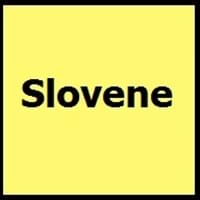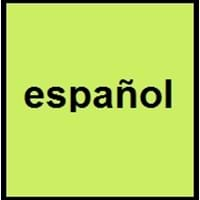Countries
European Union, Slovenia
Andora, Argentina, Aruba, Australia, Belize, Bolivia, Brazil, Canada, Chile, Colombia, Costa Rica, Cuba, Dominican Republic, Ecuador, El Salvador, Equatorial Guinea, France, Gibraltar, Guatemala, Honduras, Jamaica, Latvia, Luxembourg, Mexico, Morocco, Namibia, Netherlands Antilles, New Zealand, Nicaragua, Norway, Panama, Paraguay, Peru, Philippines, Puerto Rico, Russia, Spain, Sweden, Switzerland, Trinidad and Tobago, Turkey, United Kingdom, United States of America, Uruguay, Venezuela, Western Sahara
National Language
Austria, Croatia, Hungary, Italy, Slovenia
Spain
Second Language
Not spoken in any of the countries
Andora, Aruba, Australia, Austria, Belgium, Belize, Brazil, Bulgaria, Canada, Denmark, France, Germany, Ireland, Israel, Italy, Jamaica, Luxembourg, Morocco, Netherlands, Netherlands Antilles, New Zealand, Philippines, Poland, Portugal, Romania, Russia, Slovenia, Switzerland, Trinidad and Tobago, Turkey, United Kingdom, United States of America, US Virgin Islands
Speaking Continents
Europe
Africa, Asia, Europe, North America, South America
Minority Language
Austria, Hungary, Italy
Brazil, France, Germany, Italy, Japan, Morocco, United Kingdom
Regulated By
Slovenian Academy of Sciences and Arts
Asociación de Academias de la Lengua Española
Interesting Facts
- The Freising Monuments is the oldest preserved records of written Slovene from 10th century.
- The first Slovene book was printed in 1550.
- One of the world's most phonetic language is Spanish.
- Up to the 18th century, Spanish was diplomatic language.
Similar To
Serbo-Croatian
French Language
Derived From
Not Available
Latin
Alphabets in
Slovene-Alphabets.jpg#200
Spanish-Alphabets.jpg#200
Writing Direction
Left-To-Right, Horizontal
Left-To-Right, Horizontal
How Are You?
Kako se imate?
Cómo estás?
Good Night
Lahko noč
Buenas Noches
Good Evening
Dober večer
Bonne soirée
Good Afternoon
Dober dan
Buenas Tardes
Good Morning
Dobro jutro
Buenos Días
I Love You
Ljubim te
Te Quiero
Excuse Me
Oprostite
Discúlpeme
Dialect 1
Prekmurje Slovene
Mexican Spanish
Where They Speak
Hungary, Slovenia
Mexico
Dialect 2
Resian
Cuban Spanish
Where They Speak
Italy
Cuba
How Many People Speak
Not Available
Dialect 3
Styrian
Puerto Rican Spanish
Where They Speak
Slovenia
Puerto Rico
How Many People Speak
Not Available
Speaking Population
Not Available
Second Language Speakers
Not Available
Native Name
Not available
Español
Alternative Names
Slovenian, Slovenscina
Castellano, Castilian, Español
French Name
slovène
espagnol; castillan
German Name
Slowenisch
Spanisch
Pronunciation
[slɔˈʋèːnski ˈjɛ̀ːzik], [slɔˈʋèːnʃt͡ʃina]
[espaˈɲol], [kasteˈʎano]
Ethnicity
Slovenes
Not Available
Language Family
Indo-European Family
Indo-European Family
Subgroup
Not Available
Romance
Branch
Not Available
Not Available
Early Forms
No early forms
Old Spanish and Spanish
Standard Forms
Slovene
Pluricentric Standard Spanish
Language Position
Not Available
Signed Forms
Not Available
Signed Spanish
Scope
Individual
Individual
ISO 639 6
Not Available
Not Available
Glottocode
slov1268
stan1288
Linguasphere
53-AAA-f
51-AAA-b
Language Type
Living
Living
Language Linguistic Typology
Not Available
Subject-Object-Verb
Language Morphological Typology
Fusional
Fusional, Synthetic
Slovene and Spanish Greetings
People around the world use different languages to interact with each other. Even if we cannot communicate fluently in any language, it will always be beneficial to know about some of the common greetings or phrases from that language. This is where Slovene and Spanish greetings helps you to understand basic phrases in Slovene and Spanish language. Slovene word for "Hello" is Halo or Spanish word for "Thank You" is Gracias. Find more of such common Slovene Greetings and Spanish Greetings. These greetings will help you to be more confident when conversing with natives that speak these languages.
Slovene vs Spanish Difficulty
The Slovene vs Spanish difficulty level basically depends on the number of Slovene Alphabets and Spanish Alphabets. Also the number of vowels and consonants in the language plays an important role in deciding the difficulty level of that language. The important points to be considered when we compare Slovene and Spanish are the origin, speaking countries, language family, different greetings, speaking population of these languages. Want to know in Slovene and Spanish, which language is harder to learn? Time required to learn Slovene is 44 weeks while to learn Spanish time required is 24 weeks.





